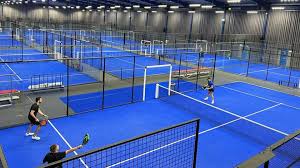

Building a Padel Court A Comprehensive Guide
Padel is a rapidly growing sport that combines elements of tennis and squash, offering a fun, engaging experience for players of all ages and skill levels. As interest in the game continues to surge, many enthusiasts are considering building their own padel courts. This article will guide you through the essential steps to successfully construct a padel court, ensuring that you create a space for enjoyable and competitive play.
1. Selecting the Location
The first step in building a padel court is to choose the right location. Ideally, the site should be relatively flat, with good drainage, ample sunlight, and enough space to accommodate the dimensions of a standard padel court, which measures 20 meters long and 10 meters wide. Accessibility is also key; ensure that your court is convenient for players to reach, whether it's in your backyard, at a sports facility, or in a community park.
Once you have selected your location, it’s time to design the court. Padel courts typically consist of a court surface made of synthetic grass, concrete, or turf material that allows for optimal ball bounce. Surrounding the court, you will need walls that are at least three meters high and made of glass or solid walls for ball rebound. It’s crucial to consult with professional architects or contractors who specialize in sports facilities to ensure that your design meets international standards.
3. Obtaining Permits

Before any construction can begin, it's important to check local zoning regulations and obtain the necessary permits. Depending on your location, building a padel court might require a special permit, particularly if it’s being built in a residential area. Engaging with local authorities early in the process will help avoid any legal complications down the road.
4. Construction Process
Once all permits are approved, you can start the construction process. This will typically involve clearing the ground, leveling the site, installing the court surface, constructing the walls, and adding the necessary lighting for night play. Ensure to follow safety standards throughout the construction process to create a reliable and durable court that will withstand regular use.
5. Maintenance and Upkeep
After your padel court is built, regular maintenance is key to ensuring its longevity and performance. This includes cleaning the court surface, checking the walls for damage, and ensuring that the lighting is functional. Having a routine maintenance plan in place will keep your court in top shape for years to come.
Conclusion
Building a padel court can be a rewarding project that promotes physical activity and community engagement. By following these steps, from selecting the location to maintaining the court, you'll be well on your way to enjoying countless hours of padel fun. Whether for personal use or to share with others, your new padel court will surely become a cherished space for friends, family, and fellow enthusiasts alike.
Smart Padel Courts with GPT-4 Turbo AI
AI-Powered Paddle Racquet w/ GPT-4-Turbo Optimized
China Pro Ping Pong Paddle | Premium Spin Control
Premium AI-Enhanced Padel Court | GPT-4 Turbo Design
High-Quality Paddle Racquet for Professional Padel and Paddle Courts
Premium Paddle Tennis Rackets for Panoramic Padel Courts